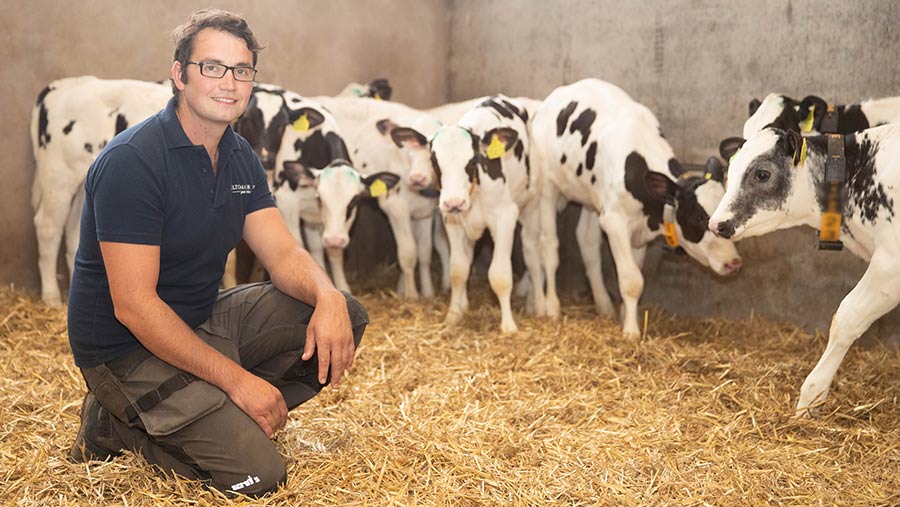Farmer Focus: Starlings cost us 19,000 litres last month
 Tom Stable © Tim Scrivener
Tom Stable © Tim Scrivener Thankfully, Christmas went smoothly, with everyone getting a bit of a break – although various illnesses seem to have swept through the camp.
If it’s not one thing, it’s another. Our immune systems seem to have taken a hammering during the Covid pandemic.
The starlings haven’t left, but since the weather warmed up, they have become more manageable.
See also: Starlings ‘steal up to £40,000 of cattle feed a farm’
If we stop them landing, they will usually stay away for the rest of the day.
The winter dysentery they brought lost us a total of 19,000 litres during December (just over two litres a cow a day), and the effect on fertility appears to be equally damaging.
Production-wise, things have really stepped up since Christmas, with the cows happily producing 35 litres/day at 4.1% fat and 3.3% protein.
We nearly always get a lift around this time of year, partly due to the stability of the winter routine, and partly because digestibility in the maize increases once it has been clamped for three to four months.
Every year we begin feeding it about three weeks after it’s been clamped, because of a lack of pit space, but we will have to try to find a way to get the best out of it.
We have just committed to replacing our original cubicle shed, which is just under 60 years old.
I’ve walked around it for 20 of those years, scheming how to alter or improve it, but I eventually decided to replace it.
The eaves are just too low and the internal legs in the wrong place for what I want to do.
Knocking down a cubicle shed to replace it with another takes a bit of justifying, especially when the old one had 146 cubicles and the new one will only have 103.
I am sure it’s the right decision, and the improvement in cow comfort will pay off in the end.
We’ve seen enough benefit from the move to sand in all the other sheds to be confident the effort will be worthwhile.
The negative sentiment around milk price hasn’t gone away – if anything, it’s worsened.
I can understand where it is coming from, and agree the outlook doesn’t appear good, but anyone claiming they know what the price will end up being is just guessing.
That said, I appreciate some guesses are more educated than others.

